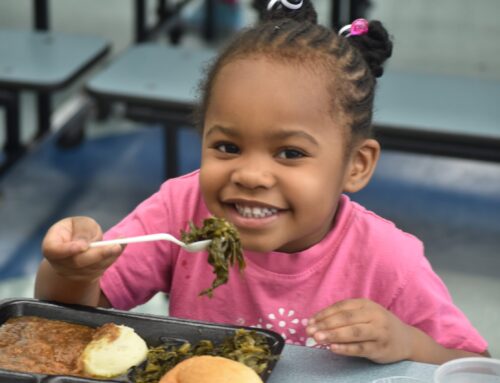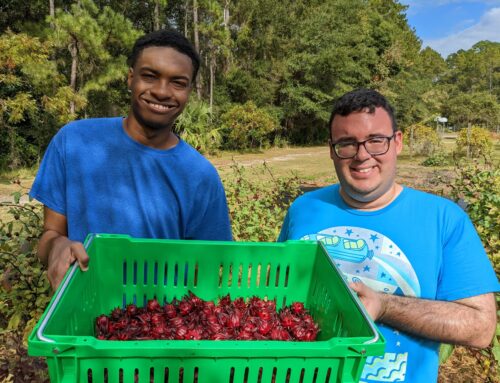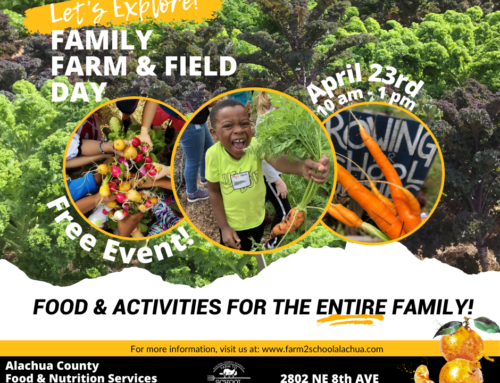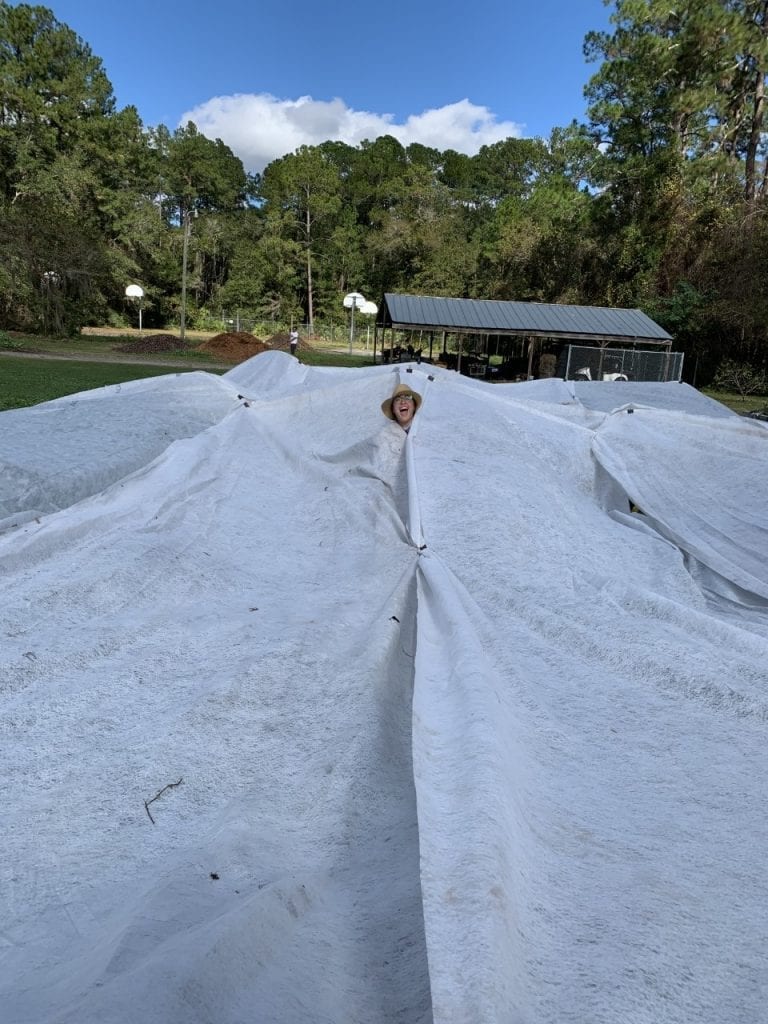
The majority of our vegetables are annuals; they die after one life cycle (seed to flower to fruit to seed). We grow them during their optimal season: warm-weather plants – like tomatoes, cucumbers, squash, Seminole pumpkins, eggplant, etc – in the spring and early summer, and cool weather plants – like broccoli, cabbage, kale, collards, lettuce, carrots, beets, radishes, etc – in mid-October through early spring. It’s hard, but when that first frost comes, it’s time to say goodbye (and “See you next year!”) to the plants we were growing over the summer and during those first months of fall.
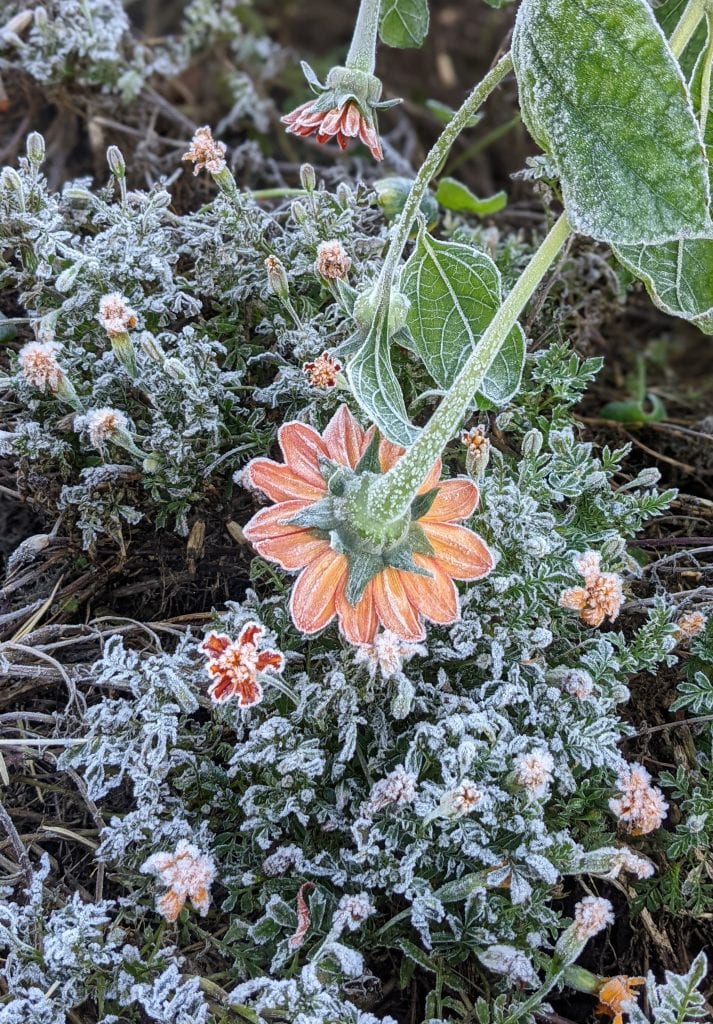
See you in 2021, marigolds and tithonia…
Often the frost is fairly close to Thanksgiving, so it’s an ideal time for a little harvest party.
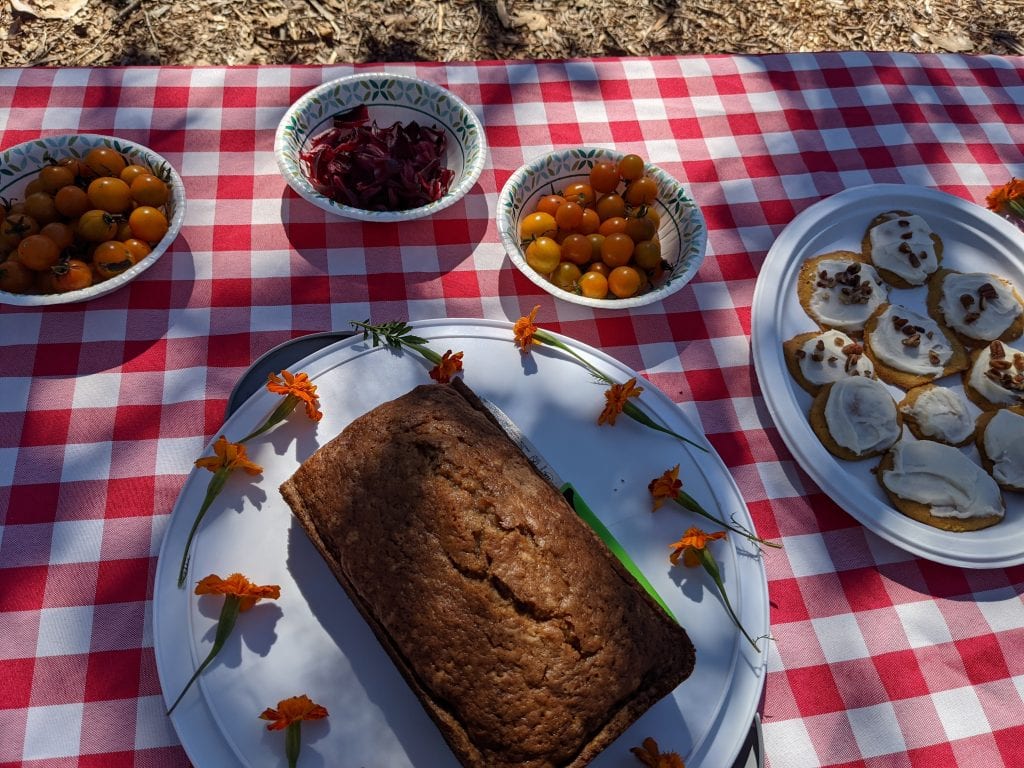
That’s all she wrote for the tomatoes, roselle, and pumpkins (now pumpkin bread and pumpkin cookies).
It very rarely gets cold enough in North Central Florida to cover the cool weather plants, unless they are tender seedlings. We had a few of those this year, and employed our tried and true bed covers to keep them snuggled. We also hoped to eek out just a little more time for the pumpkins. We had to call it quits after the second frost really hammered the vines, but we got our second crop of 51 pumpkins thanks to a heroic crop-covering effort by students and volunteers. These pumpkins were given out to students as part of the Fresh Fruit and Vegetable Program, along with this recipe for pumpkin soup.

In contrast to the first frost, the last frost can wreak havoc on warm weather plants that need to go in fairly early to get a harvest by the end of the school year. Our school gardens are issued frost cloth and a basic support kit made of rebar and pvc pipe that might work at home as well if you use raised beds. This is what we do:
